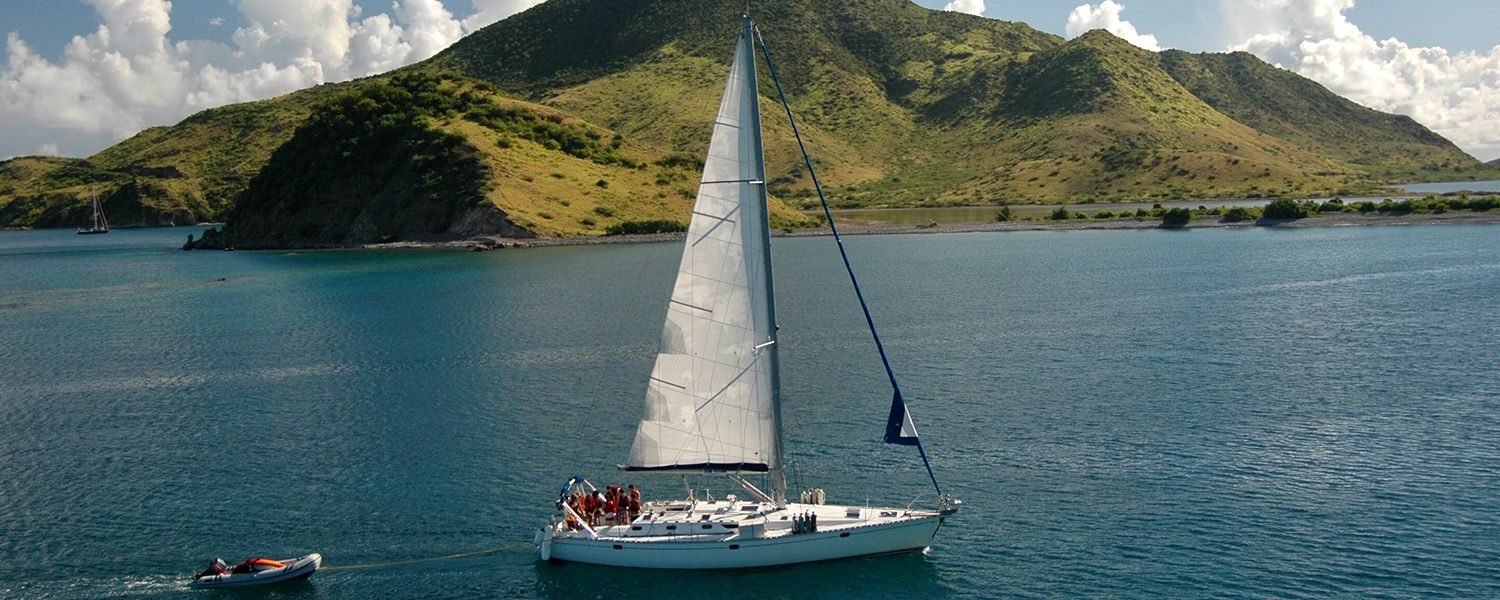
Living on a boat 101
By: Broadreach HQ March 2, 2020 High School Adventures, Middle School, Pro Dive, Scuba, Sailing
“For those who know what it’s like to live on a boat, you know that waking up to the gentle rocking of the waves is a feeling like no other. It expands your world to the limitless opportunities to explore nooks and crannies of islands while simultaneously narrowing your focus to the tasks at hand. You’ll experience the joy of making a messy boat ship shape in a mere 20 minutes of hard work before turning attention to the gorgeous reefs that are just a jump away. Living on a boat teaches the skills, both practical and interpersonal, that makes navigating any challenge thrown your way possible.” – Kate Farthing, former director of Broadreach dive and sail programs
Living on a boat is a unique and fun-filled experience. Co-existing in limited quarters brings a new appreciation for teamwork and interpersonal dynamics, and requires that we learn to be smart with our resources.
Since it is so different than life on land, we at Broadreach like to prepare students for some of the various aspects they may not be used to – we want them to know what to expect! Here’s a look inside different (and important!) aspects of living on a boat for your summer adventure.
Water conservation
First, let’s talk about fresh water on the boat. We have freshwater tanks on the boat that we fill up at a number of locations throughout the islands we visit but, ultimately, we have a finite amount of freshwater on board. This gives students a great hands-on lesson in conservation – living on a boat allows them to actually feel what it’s like to live with mindful water conservation.
For hand washing and sink use in general, we try to limit it, using a lot of hand sanitizer rather than constantly using water to wash hands. Similarly for showers on board, we do “boat showers” where students jump in the ocean from the back steps, climb out to use shampoo, and jump back in, and climb out and wash your body, and at the end of that you can have 10-30 seconds of freshwater to rinse the salt off your body.
Bathrooms
Another thing that is different on the boat are the toilets – they are not your standard, Western flush toilets, but are marine toilets or “heads” as they’re called on boats. They work on a pump system, so you pump sea water in and then pump out. It takes some getting used to, but it is easy once you’ve done it a few times! Each of the boats has a head per cabin.
Food
We always have plenty of food on board each boat. We provision dry foods for the whole trip before we set sail, and then re-provision fresh food throughout the trip on different island visits. Typical breakfasts are everything from cereal, granola and pancakes to eggs, hash browns and French toast. Lunches usually consist of sandwiches, burritos or pasta salads. Dinners are when the kitchen gets creative with rice dishes, chicken alfredo, Mexican food, stir fry and desserts.
Don’t know how to cook? You’ll learn! Every day there is a cook team that is responsible for preparing breakfast, lunch and dinner. We have a menu book called the “galley guide” that has easy and approachable meals, and instructors will also assist and supervise food preparation.
If you have special dietary needs like allergies, gluten intolerance or are a vegetarian, be sure and let us know on your medical forms. We can easily modify meals and accommodate with alternative options.
Cleaning
No one on the boat is a passenger – everyone is an active member of the crew, so students and staff are responsible for all aspects of boat living. This means that we have some chores and responsibilities to keep everything ship shape! It is very important that we keep the boat clean. It is a warm and wet environment with a dozen plus people living on board, so we clean up after every meal. Just as we have a cook team rotation, we have clean teams so everyone is responsible for helping clean the boat to keep everyone safe.
Sleeping
There are four cabins on the catamaran, and we typically assign no more than four students to a cabin. They’re below deck, but most students choose to sleep out on deck beneath the stars! Students usually choose to sleep on the deck of the boat or out on the trampoline net in a safe, designated space. We do recommend bringing a sleeping bag and sleeping pad for sleeping out on the deck.
Electronics
The last thing students need to consider, particularly in relation to conservation, is the charging of electronics. There are only a couple of outlets on the boat and, in order for the outlets to work, we have to run the boat batteries. Charging the batteries requires running the engines, which burns a lot of diesel – not so great for the environment. Plus, it’s loud! While we do charge batteries daily, we try not to run them for too long, meaning there are limited opportunities to charge electronics on board. Instructors have cell phones and laptops for communication and academics, and their electronics will receive priority for charging.
Living aboard a boat is an experience like no other, so we want students to be prepared. Each student holds responsibility, playing a crucial role in the success of any program. While it’s definitely different than the typical comforts at home, living aboard a boat is… well, fun! If this seems like something you want to try, check out all of our high school adventures or give us a call directly at 919-256-8200 to find the right adventure for you.
